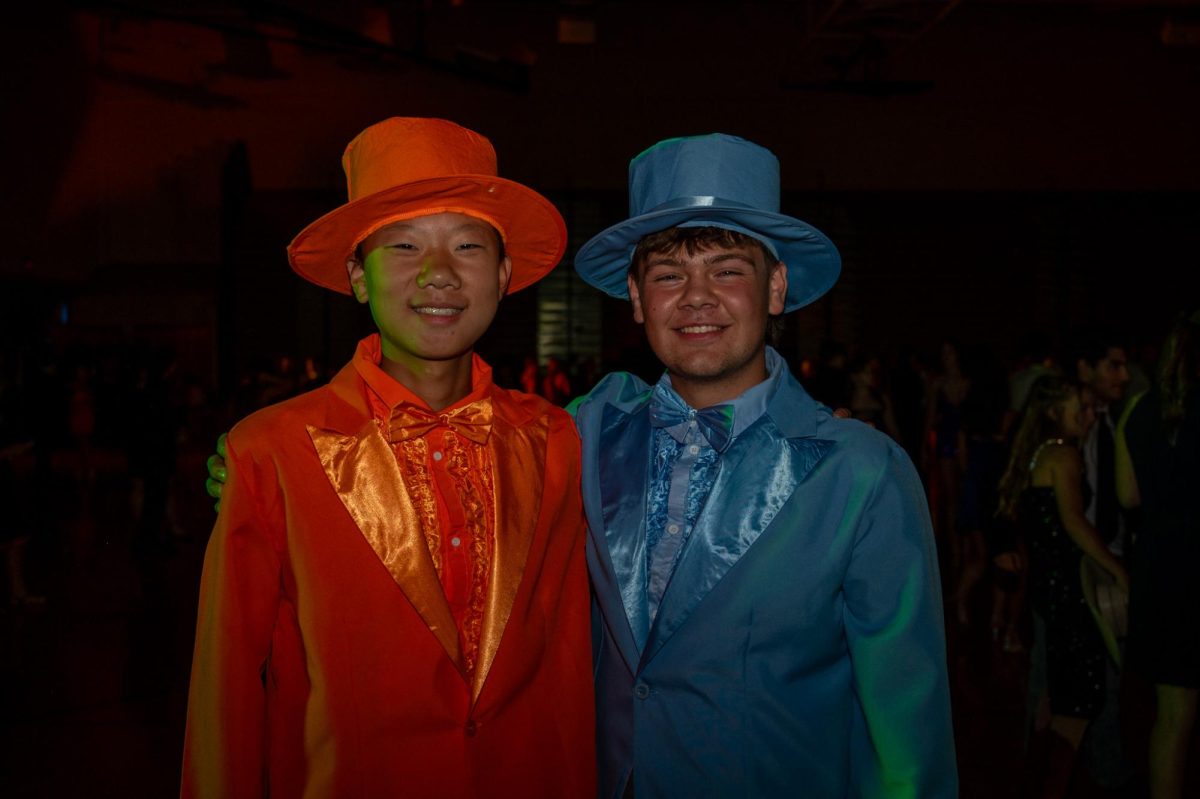QUICK INTRODUCTION:
The teen mental health crisis has been a huge discussion, but not much has been done about it. We see a rise in social anxiety, depression, autism, and adhd diagnoses. That is great, getting diagnosed opens up new doors to help, but no one really talks about how it affects the ability to make meaningful connections to others. A lot of teens who struggle with this are easily deemed as weird, unapproachable, made fun of or simply self-isolated. This rejection occurs on a regular basis whether it is subconscious or not.
This itself is heartbreaking because the people who fall into these groups deserve the rewarding feelings that come from making good connections. I must preface that this article mainly focuses on those who have anxieties, depression, autism, or some form of neurodivergence. This may not resonate well with others outside those contexts. This article strives to deconstruct friendship into solid steps and rules that are easily understood. It also is to provide advice to conflicts within friendship and how to maintain friendships.
PART ONE: RECOGNITION
Elizabeth A. Laugeson, PSY. D. wrote around a 400 page book on this subject, “The Science of Making Friends” and will be my main source. There is also a book that will be referenced titled, “How to Win Friends & Influence People” by Dale Carnegie. These two talented authors make friendship simultaneously look and feel easy.
The first applicable topic is how your subconscious processes peer social neglect and how to overcome it. Rejection is a common experience for individuals with mental illness or neurodevelopmental conditions.
An excerpt from “The Science of Making Friends” explains social neglect and its impact, “Approximately 15 percent of remaining teens struggling socially are called socially neglected. For these teens, social impairment comes in the form of withdrawal and social isolation… Often described as timid or introverted,… those who are socially neglected don’t necessarily struggle with a bad reputation. In fact, they may not have a reputation at all. They’re the forgotten ones, the ones who keep to themselves, don’t bother others, and typically go unnoticed…” (Laugeson, 2013, p. 20).
So what does this mean?
If someone is unaware of their social neglect or even if they subconsciously recognize it– their lack of status remains unchanged. This absence of social presence can lead to feelings of invisibility, reinforcing isolation and making it difficult to break free from the cycle. Over time, without intervention or self-awareness, socially neglected individuals may internalize this role, struggling to establish meaningful connections or assert themselves in social spaces.
So What Can I Do About It?
The obvious solution might seem to be forcing yourself to talk more, jumping into conversations, or engaging in uncomfortable social interactions before you’re ready. But that’s not the best approach. Instead of immediately adopting typical “extroverted” behaviors, the first step should be finding the right social group and taking time to observe them.
The average person may perceive observation as odd or even intrusive, but it serves a crucial purpose—it allows your body and mind to acclimate to social settings. That is without the pressure of immediate participation or contribution. Observation helps you recognize key dynamics within a group, such as shared interests, common skills, or advice that could be beneficial to you. These are strong indicators that the group may be a good fit.
Another promising sign is if you have something to offer that contrasts with what they bring to the table. The idea that “opposites attract” applies in social interactions as well; people are often drawn to those who complement rather than completely mirror them. Similarly, this observational stage allows you to easily identify any potential “red flags”, behaviors or social cues that indicate the group may not be a healthy or welcoming environment for you (and if not, conferring with someone else can also be beneficial).
Once you’ve found a group that feels right, the next step is to approach them in a way that fosters positive interaction. Learning how to properly greet them and crafting a friendly, natural introduction is essential. The goal is not just to make a good impression but to ensure your friendliness is perceived as genuine and well-received. Social connection isn’t just about speaking more; it’s also about speaking with intention and awareness of that awareness.
To make this easier to understand, I’ve broken it down into steps straight from the book;
- Use the ‘Entry Strategy’: Laugeson introduces the concept of “joining a group” by standing nearby and listening before speaking. She recommends positioning yourself at the edge of the group without interrupting, appearing interested in the conversation. This allows you to gauge the group’s mood and flow of conversation before contributing.
- Make a Smooth Entrance: When there’s a natural pause, you can enter the conversation by making a relevant comment, question, or agreeing with something that was just said. Avoid changing the topic immediately or steering the conversation toward yourself. Instead, engage with what’s already being discussed, as this makes your presence feel more natural.
- Use Socially Accepted Greeting Strategies: Laugeson stresses the importance of greeting people in a way that is friendly but not overwhelming. A simple “Hey, how’s it going?” with a warm but subtle smile is often enough. She warns against over-enthusiasm, such as excessive compliments or forced energy, which can make interactions feel unnatural.
- Avoid ‘Social Turn-Offs’: The book highlights common mistakes that can unintentionally push people away. These include:
- Talking too much about yourself without reciprocating interest.
- Standing too close or too far; respecting personal space is key.
- Dominating the conversation rather than balancing speaking and listening.
- Forcing humor or jokes that don’t match the group’s energy.
- Bringing up controversial topics or emotionally opinionated conversation (especially in the first few interactions!)
- Use the ‘Two-Question Rule’: A practical tip from the book is the “Two-Question Rule.” When initiating conversation, ask two questions related to the topic before sharing something about yourself. This keeps the interaction balanced and shows genuine interest in the other person.
- Know When to Exit Gracefully: If the group doesn’t seem receptive or the conversation isn’t going well, Laugeson advises exiting in a way that keeps doors open for future interactions. A simple, “Nice talking to you, I’ll catch you later,” allows you to leave without creating awkwardness.
These steps are crafted to be easy, and hard to “screw up”. To make a “TL;DR” out of this, she mainly highlights, to join a group conversation smoothly, starting by staying close, listening, and observing before speaking. When a natural pause occurs, enter with a relevant comment or question rather than shifting the topic. Greet others in a friendly but natural way, avoiding excessive enthusiasm. Maintain balance by respecting personal space, engaging without dominating, and ensuring humor matches the group’s energy. If the conversation isn’t going well you can exit graciously and head back to your “drawing board”.
PART TWO: MAINTENANCE
So I Have New Friends—What Do I Do to Keep Them?
Making friends is one thing—keeping them is another. While initial connections may form through shared interests, humor, or circumstance, maintaining a friendship requires consistent effort, trust, and mutual respect. Friendships, like any meaningful relationship, are dynamic and require ongoing attention to thrive. Without proper care, even the strongest bonds can weaken over time due to misunderstandings, lack of communication, or shifts in priorities.
Dale Carnegie, in “How to Win Friends & Influence People”, emphasizes that the key to maintaining friendships is to make people feel valued and appreciated. He famously states, “You can make more friends in two months by becoming interested in other people than you can in two years by trying to get other people interested in you” (Carnegie, 1981). Friendships require reciprocity—not in the sense of keeping score, but in the willingness to invest in the relationship through consistent communication, genuine interest, and positive reinforcement. This section explores key principles from Carnegie’s work that can help sustain strong friendships over time.
- Be a Consistent and Reliable Friend: Friendships thrive when people feel valued and important. Carnegie stresses the importance of remembering names, checking in regularly, and showing a sincere interest in others’ lives (1981). Small acts, like sending a quick message or remembering important details about a friend’s experiences, reinforce trust and make people feel appreciated.
- Practice Active Listening: One of the most powerful ways to maintain a friendship is to be a good listener. Carnegie advises, “Be a good listener. Encourage others to talk about themselves” (1981). When you actively listen—by asking follow-up questions, maintaining eye contact, and showing empathy—you make your friends feel heard and understood, strengthening your connection.
- Make Others Feel Important: Carnegie emphasizes that people crave appreciation, not flattery. He writes, “The deepest principle in human nature is the craving to be appreciated” (1981). Offering sincere compliments, acknowledging your friends’ achievements, and expressing gratitude for their presence in your life will go a long way in sustaining meaningful relationships.
- Avoid Criticism and Complaints: Disagreements happen in any friendship, but how you handle them matters. Carnegie warns that criticism often leads to defensiveness and resentment rather than resolution. Instead, he suggests approaching conflicts with understanding and encouragement. He writes, “Any fool can criticize, condemn, and complain—but it takes character and self-control to be understanding and forgiving” (1981). Handling conflict with maturity and kindness helps preserve friendships rather than damage them.
- Show Genuine Interest and Support: Friendships are not about impressing others—they are about mutual care and support. Carnegie advises, “Talk to someone about themselves and they’ll listen for hours” (1981). Taking the time to ask about a friend’s passions, struggles, and dreams builds a deeper connection. Supporting them through both successes and setbacks will solidify your bond.
- Ensure the Friendship is Mutual: A strong friendship is based on equal effort. If you find yourself always initiating contact or offering support without receiving the same energy in return, it may be worth reevaluating the relationship. Carnegie’s principles suggest that healthy friendships should be rooted in mutual appreciation and respect, rather than obligation.
At its core, maintaining friendships is about making people feel seen, valued, and respected. By applying Carnegie’s timeless advice, you can build friendships that are not only long-lasting but deeply fulfilling.
PART THREE: ADVICE
My final thoughts on this have a more personal touch to things and share some of my experiences. When I was around 13 years old I was the most socially isolated I had been in a long time. It was gruesome, lonely, and I found it so hard to keep up with so many different complex beings. I was diagnosed with a few at the time and autism. It made it not only feel more dark and scary, but lonely.
Regardless, it was one of the worst years of my life. I was given both of these books about when I turned 14 that same year by a family member. They were the only ones to really see me for who I was and not what I looked like while I struggled to connect and take care of myself. They advocated for me when I couldn’t and gave me unforgettable advice. The books I referenced have a special place in my heart due to that.
Now, my final thoughts, lay as follows:
- Be TRUE to YOURSELF: Friendship isn’t about changing who you are to fit in—it’s about connection, not performance. Pretending to be someone you’re not leads to shallow relationships, while authenticity attracts the right people. Confidence in your true self is the foundation for meaningful friendships.
- Be Patient AND Kind: First impressions can be misleading—someone distant or irritable may just be anxious, just as you might be. Defensiveness and passiveness often stem from deeper feelings, and responding with patience and kindness fosters understanding. Genuine connections take time and care to grow.
- Take Initiative: Friendships don’t just happen; they require effort. Don’t be afraid to reach out, start conversations, or suggest plans. Small gestures, like checking in or remembering details about someone’s life, go a long way in building trust and connection.
- Respect Boundaries: Healthy friendships thrive on mutual respect. Everyone has different comfort levels when it comes to communication, time spent together, and personal topics. Being mindful of these boundaries strengthens trust and ensures that both you and your friend feel valued.
- Keep Showing Up: Consistency is key. Strong friendships aren’t built overnight—they require effort over time. Be there for people, not just when it’s convenient but when they need you most. Reliability and support deepen bonds and turn acquaintances into lifelong friends.
Reference(s):
Laugeson, E. A. (2013). The Science of Making Friends: Helping Socially Challenged Teens and Young Adults. Jossey-Bass.
Carnegie, Dale. How to Win Friends & Influence People. Revised ed., Pocket Books, 1981.












